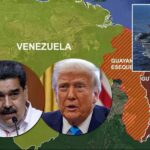
South Korean companies are making record investments in the U.S. as the Biden administration’s efforts to exclude China from its supply chain, combined with attractive subsidies for advanced technology manufacturers, result in a significant increase in projects from Seoul. By 2023, these commitments totaled US$21.5 billionsurpassing other countries, including Taiwan, which was the largest investor in 2022, according to data from United Nations Conference on Trade and Developmentanalyzed by Financial Times.
It was the first time in a decade that South Korea took the top spot in U.S. project commitments, marking the fall of China, which was the top investor in 2014 but fell to eighth place last year with a one-third reduction in its investment. The data, which does not include acquisitions, reflects investment in new projects — known as greenfield — that create facilities and jobs.
Although South Korean commitments were 11% lower than the previous year, the number of projects reached a record high of 90 em 2023an increase of 50% over the previous year. According to Chihwan KimCEO of the automotive supplier Samkee“the US no longer wants to depend on China,” which creates an opportunity for South Korean companies to become US suppliers. Last year, Samkee invested US$ 128 million to open its first factory in Alabama.
This increase in South Korean investment is driven by the approval of the Chips and Science Act and of the Inflation Reduction Act by the Biden administration in 2022, which offers hundreds of billions in subsidies, tax credits and loans to boost U.S. production of semiconductors and clean technologies such as electric vehicles and solar panels, reducing dependence on China.
More than a third of South Korean projects announced in the U.S. in 2023 were in the automotive and electronics sectors. The IRA, for example, offers a tax credit of US$ 7.500 for electric vehicles manufactured in North America.
The tensions between Washington e Beijing have also been pressuring South Korean companies to scale back their operations in China and seek expansion in the U.S. Chips Actfor example, includes “national security restrictions” that prevent beneficiary companies from expanding production or licensing technologies in China.
In 2023, more than half of South Korea’s outbound investment went to the US, compared to just 18% in 2019. On the other hand, China received less than 1% of South Korean investment last year, a significant drop from 11% in 2019.
Among the largest investments announced last year are US$ 4.3 billion and Hyundai to manufacture batteries with the LG Energy Solution and supply its electric vehicle factory in Georgia, and US$ 3.5 billion and Samsung SDI with the GM to a factory in Indiana.
Macroeconomic difficulties and the slowdown in demand for electric vehicles have delayed some projects. LG Energy Solutionfor example, suspended its factory US$ 2.3 billion in Arizona, citing “market conditions.” The Samkee has also delayed expanding its electric vehicle lineups due to slower-than-expected adoption.
Hal Connollychief policy officer at Korean solar parts maker Qcellswarned that without additional trade protections, the sector risks failure, especially in the face of Chinese competition.
Source: https://www.ocafezinho.com/2024/09/18/investimentos-sul-coreanos-crescem-nos-eua-com-queda-da-china/

